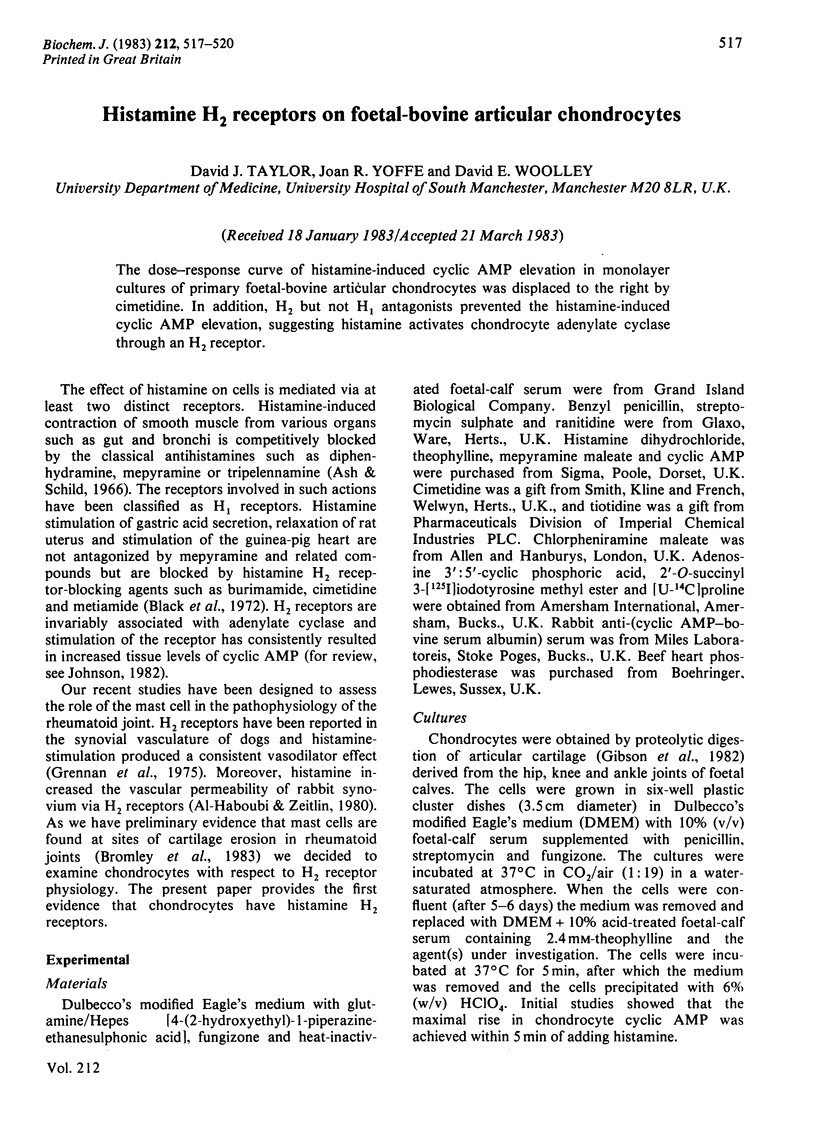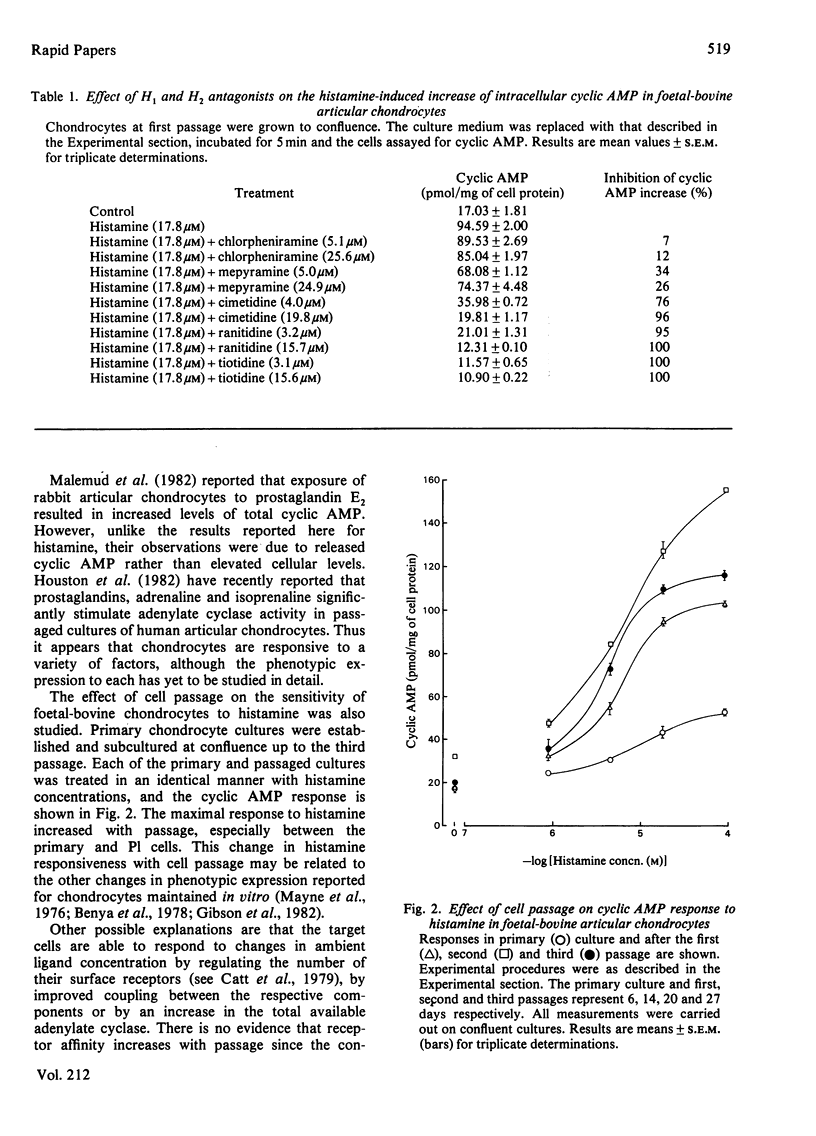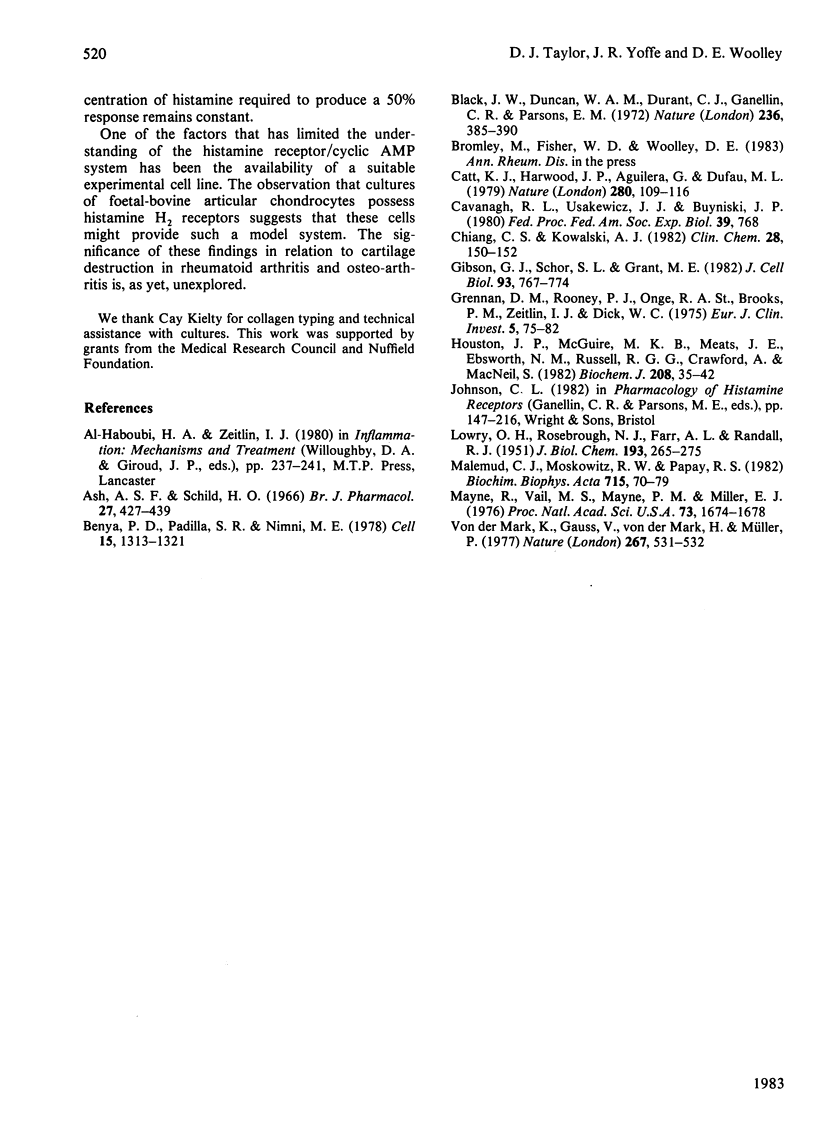Abstract
The dose-response curve of histamine-induced cyclic AMP elevation in monolayer cultures of primary foetal-bovine articular chondrocytes was displaced to the right by cimetidine. In addition, H2 but not H1 antagonists prevented the histamine-induced cyclic AMP elevation, suggesting histamine activates chondrocyte adenylate cyclase through an H2 receptor.
Full text
PDF



Selected References
These references are in PubMed. This may not be the complete list of references from this article.
- Ash A. S., Schild H. O. Receptors mediating some actions of histamine. Br J Pharmacol Chemother. 1966 Aug;27(2):427–439. doi: 10.1111/j.1476-5381.1966.tb01674.x. [DOI] [PMC free article] [PubMed] [Google Scholar]
- Benya P. D., Padilla S. R., Nimni M. E. Independent regulation of collagen types by chondrocytes during the loss of differentiated function in culture. Cell. 1978 Dec;15(4):1313–1321. doi: 10.1016/0092-8674(78)90056-9. [DOI] [PubMed] [Google Scholar]
- Black J. W., Duncan W. A., Durant C. J., Ganellin C. R., Parsons E. M. Definition and antagonism of histamine H 2 -receptors. Nature. 1972 Apr 21;236(5347):385–390. doi: 10.1038/236385a0. [DOI] [PubMed] [Google Scholar]
- Catt K. J., Harwood J. P., Aguilera G., Dufau M. L. Hormonal regulation of peptide receptors and target cell responses. Nature. 1979 Jul 12;280(5718):109–116. doi: 10.1038/280109a0. [DOI] [PubMed] [Google Scholar]
- Chiang C. S., Kowalski A. J. cAMP radioimmunoassay without interference from calcium or EDTA. Clin Chem. 1982 Jan;28(1):150–152. [PubMed] [Google Scholar]
- Gibson G. J., Schor S. L., Grant M. E. Effects of matrix macromolecules on chondrocyte gene expression: synthesis of a low molecular weight collagen species by cells cultured within collagen gels. J Cell Biol. 1982 Jun;93(3):767–774. doi: 10.1083/jcb.93.3.767. [DOI] [PMC free article] [PubMed] [Google Scholar]
- Houston J. P., McGuire M. K., Meats J. E., Ebsworth N. M., Russell R. G., Crawford A., Mac Neil S. Adenylate cyclase of human articular chondrocytes. Responsiveness to prostaglandins and other hormones. Biochem J. 1982 Oct 15;208(1):35–42. doi: 10.1042/bj2080035. [DOI] [PMC free article] [PubMed] [Google Scholar]
- LOWRY O. H., ROSEBROUGH N. J., FARR A. L., RANDALL R. J. Protein measurement with the Folin phenol reagent. J Biol Chem. 1951 Nov;193(1):265–275. [PubMed] [Google Scholar]
- Malemud C. J., Moskowitz R. W., Papay R. S. Correlation of the biosynthesis of prostaglandin and cyclic AMP in monolayer cultures of rabbit articular chondrocytes. Biochim Biophys Acta. 1982 Mar 15;715(1):70–79. doi: 10.1016/0304-4165(82)90051-4. [DOI] [PubMed] [Google Scholar]
- Mayne R., Vail M. S., Mayne P. M., Miller E. J. Changes in type of collagen synthesized as clones of chick chondrocytes grow and eventually lose division capacity. Proc Natl Acad Sci U S A. 1976 May;73(5):1674–1678. doi: 10.1073/pnas.73.5.1674. [DOI] [PMC free article] [PubMed] [Google Scholar]
- von der Mark K., Gauss V., von der Mark H., Müller P. Relationship between cell shape and type of collagen synthesised as chondrocytes lose their cartilage phenotype in culture. Nature. 1977 Jun 9;267(5611):531–532. doi: 10.1038/267531a0. [DOI] [PubMed] [Google Scholar]


